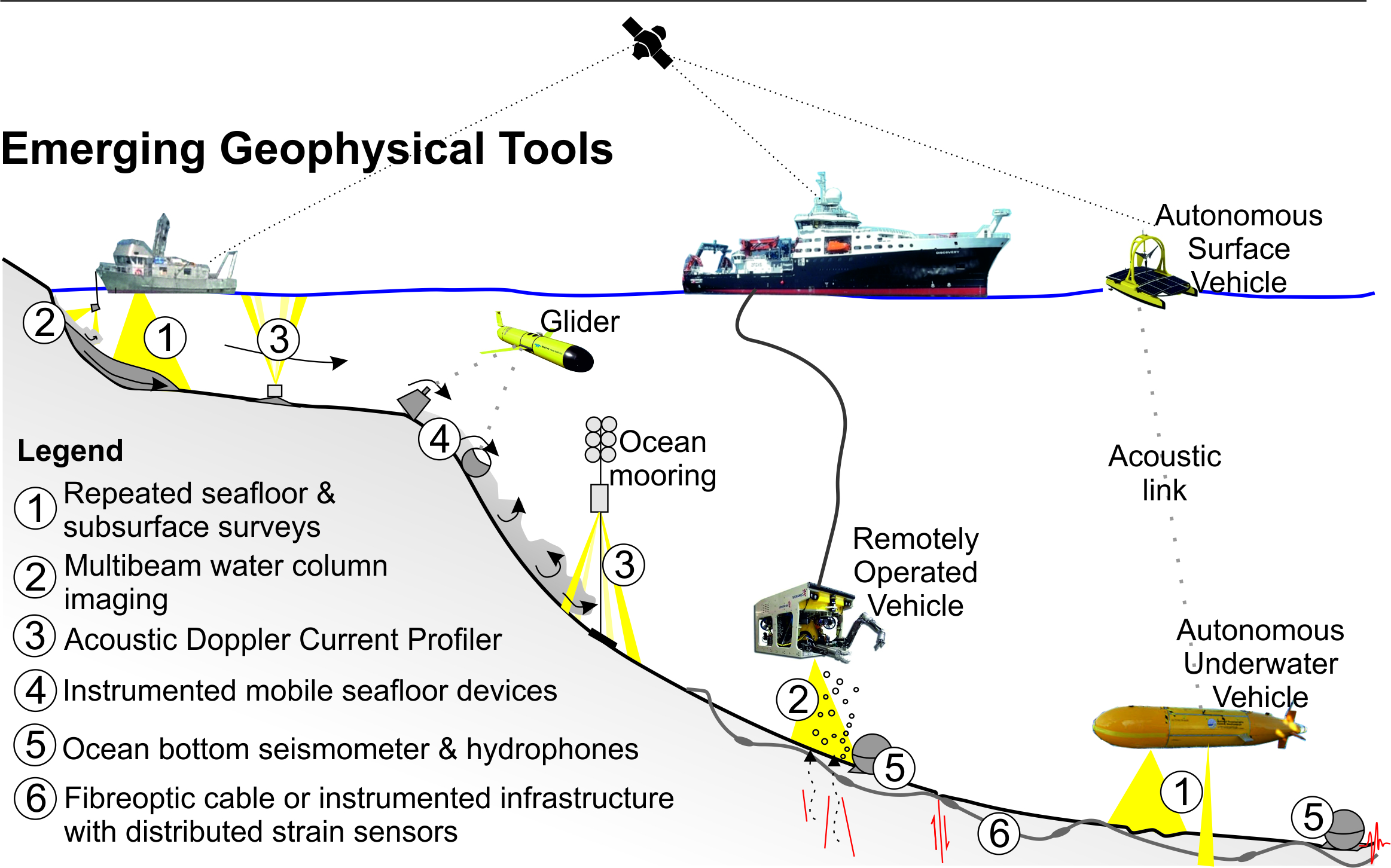16th April 2019
Abstract
PESGB Members do not need to register to attend
PLEASE NOTE THAT THIS EVENT IS ONE WEEK LATER THAN USUAL

Powerful avalanches of sand and mud in the ocean, known as turbidity currents, are among the volumetrically most important sediment transport processes globally. They can transport large quantities of sediment across vast tracts of seafloor, at speeds that break important infrastructure, including expensive oil and gas pipelines. The largest sediment accumulations and deepest canyons on Earth are formed by these flows, but despite their importance, there is still much we do not know about them. Unlike their onshore equivalents – rivers – only a handful of direct measurements exist for turbidity currents; hence, we have had to rely on the deposits that they left behind and scaled-down laboratory models to understand them.
New developments in technology now enable detailed and direct measurements of full-scale turbidity currents and other marine geohazards in their “natural habitats”. In this talk, Mike will provide a guided tour around submarine canyons offshore Angola, California and Canada where turbidity currents have recently been measured at unprecedented detail. These include the thickest and fastest turbidity currents yet measured, which sculpt the seafloor – sometimes on a daily basis. He will first discuss the implications of these measurements for seafloor geohazards assessment, how we interpret deposits and determine their preservation over geological timescales, and how repeated flows control the evolution of large-scale submarine systems. He will conclude with a synthesis of observations from multiple sites worldwide, and compare them with measurements from other geophysical flows to show how new measurements are challenging some of our long-stood preconceptions of turbidity currents.

Bio
Dr Mike Clare leads the Geohazards and Marine Sedimentology Research Group at the National Oceanography Centre. His research is focused on better understanding seafloor hazards and sediment transport by integrating traditional observational techniques, novel statistical and numerical modelling, and direct monitoring of active seafloor systems using emerging technologies. He formerly worked for ten years as a geohazard consultant to offshore industries for ten years, having led Fugro’s UK Engineering Geology and Geohazard Team. He maintains a collaborative link with oil and gas, renewables and telecommunications industries.
Video
Venue Information
Venue information
Venue name:
The Geological Society, London
Venue phone:
+44 (0)20 7434 9944

